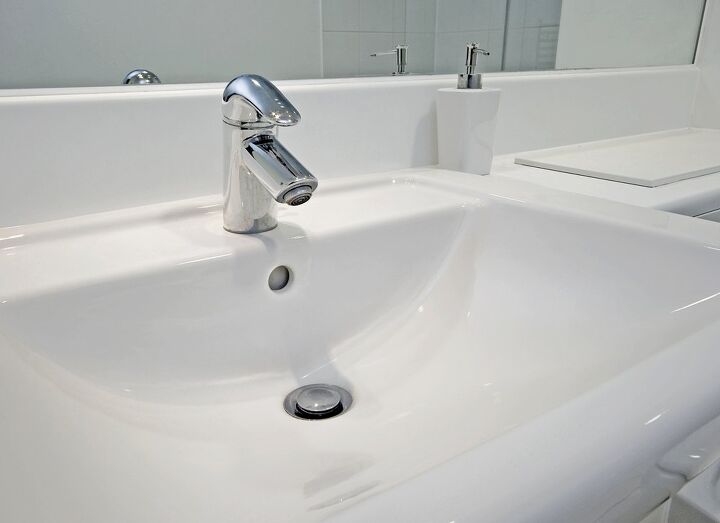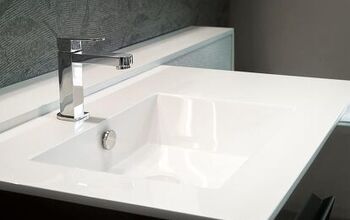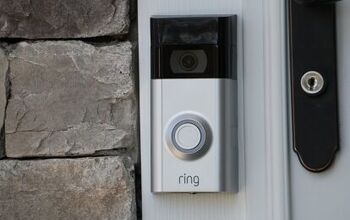Is There White Slime In Your Sink? (We Have a Fix!)

The average sink sees a lot of food waste, minerals, and bacteria that we are generally used to seeing. However, it can be disconcerting when you find white slime in your sink without any obvious explanation. So, what does it mean when there is white slime in your sink, and what should do about it?
White slime in your sink is biofilm which is a group of microorganisms that can stick to a surface. It is common to find a biofilm in a fish tank, swimming pool, or sink where bacteria, algae, and fungi can join together. Pour ¼ cup baking soda and 1 cup vinegar into the sink to kill the biofilm.
You can also remove white slime in your sink with hot water. However, it is best to use both hot water and vinegar-baking soda mixture together to remove the biofilm. Follow along as we explore what it means when there is white slime in your sink.
Do You Need a Maid Service?
Get free, zero-commitment quotes from pro contractors near you.

What is the White Slime in My Sink?
The white slime in your sink is a biofilm, and it is a mucous-like substance made out of bacteria. Microorganisms come together and create the white film so that it can stick to surfaces and continue to feed. This is common in sinks because of the high volume of bacteria that love moisture, and they can thrive in your sink or drain for weeks or months.
Bacteria can reproduce within your drain or the surface of your sink once the biofilm forms. You can also find white slime deep within your pipes where a biofilm can also easily thrive. Generally, a biofilm will not go away on its own and you will have to remove it.
Is White Slime Dangerous?
Remove white slime in your sink as quickly as possible to reduce the risk of danger. Wash your hands and avoid touching your face, eyes, and mouth. The white slime contains bacteria and other microorganisms that may be harmful. Keep pets and children away from the white slime.
How to Get Rid of White Stuff on Sink
You can remove white slime from your sink with hot water, baking soda, and vinegar. Boil 2 cups of water and pour it into the sink and down the drain to start. The extreme temperature should help kill or weaken the biofilm in your sink and wash away some of the white stuff.
Pour ¼ cup of baking soda down the drain and into the sink basin. Let it sit for a moment, then pour 1 cup of white vinegar into the sink. Let the vinegar and baking soda sit in the sink for 15 minutes, then rinse it away with warm water.
It is ideal to use hot water first and then use the baking soda and white vinegar solution. This will increase the chances that you remove as much of the white slime in your sink as possible. Repeat the process as many times as you need to break up all of the biofilm in your sink.
Remove White Slime From Faucet
Gather baking soda, white vinegar, a bowl, and brush to remove white slime from the faucet. Mix ¼ cup of baking soda, ½ cup of white vinegar, and ½ cup of warm water in a bowl. Soak a brush or rag in the solution and brush it all over the faucet.
Make sure to cover all of the white slime and scrub it with the mixture. Brush another layer of the mixture on the faucet after you scrub the white slime and let it sit for 15 minutes. Scrub the faucet with a rag or brush and plain water to remove any remaining white slime.
White Slime in Drainpipe
White slime in your sink is often an indication that there is a biofilm within the drainpipe as well. You can tell that there is a biofilm in your drainpipe if you find white slime in your sink and it drains slowly. All that it takes is hot water, baking soda, and white vinegar to remove white slime from your drainpipe.
However, you may need to use a drain snake or brush to remove excess sludge. Hire a plumber if you don’t have the tools to safely reach your drain pipe when there is white slime in it.
The Many Colors of Bathroom Slime
Unfortunately, white is not the only color of slime that you may find in your bathroom or kitchen. There is a kaleidoscope of slimes in nature, and some may be hiding in your home.
Black Slime
Black slime typically comes up through sink drains. It is a combination of soap film, lotion, and other hygiene products mixed with phlegm. Pour 1 cup of baking soda into the drain, and let it sit for about 3 to 5 minutes. It soaks up the black slime and removes any offensive odors.
Pink Slime
Pink is too pretty to be bad, except in the world of bacteria. Serratia marcescens is the bacteria that is responsible for pink slime. This type of bacteria thrives on fatty substances, such as human waste and skin soaps. Not only is the color of Serratia marcescens unusual, but so is the way the bacteria travels – through the air, and not the water.
If you find pink slime in your bathroom, mix equal parts of white vinegar and water. Spray the pink slime with the solution, and let it soak for about 10 minutes. Put on a pair of gloves, and scrub the area with the pink slime.
Unlike other types of slime that can be eliminated, the goal with pink slime is to make the environment less welcoming.
- Run the exhaust fan in your bathroom for 30 minutes after showering and bathing
- Squeegee the walls of the shower to remove excess moisture
- Clean soap scum from the shower walls and tub
Yellow Slime
Yellow slime in your bathroom is caused by certain types of molds, such as Serpula lacrymans, Aspergillus, and Meruliporia incrassate. The slime is actually small, mushroom-like colonies that typically form on shower curtains and walls, around faucets, and under the sink. The slime is typically bright yellow.
In general, these types of molds are not dangerous, but they can be harmful to people with compromised immune systems and certain chronic medical, as well as to young children and pets. Clean the yellow slime with a household product that is designed for mold removal. If the mold returns, have a professional plumber check for leaks and clogs that give the mold an ideal environment to thrive.
Orange Slime
Luckily, orange slime is typically neither bacteria nor mold. It is a combination of soap scum and iron that mix together in water. Clean with rubbing alcohol or a mixture of water and lemon juice. You may have to scrub the stains. For more difficult stains, mix the juice of half a lemon with water in a 20-ounce spray bottle. Apply the solution to the stains, and let it sit for about 10 to 15 minutes. The stains should wipe off. Repeat as needed.
Related Questions
What is the best way to clean soap scum?
Combine equal part of water and vinegar, and add 1 tablespoon is dish soap. Spray the solution on the soap scum, and let it sit for about 15 minutes. Scrub the area with a soft brush, and rinse with hot water.
How can I prevent hair clogs?
Cover the drain of your bathtub with a plastic or metal screen filter. Remove the hair after showering and bathing, and throw it in the trash. Do not put the hair down the sink drain or in the toilet.
What is the most common type of mold in bathrooms?
Black mold is the most common form of mold found in bathrooms, kitchens, and other areas with water. The phrase “black mold” describes several types of molds, such as Stachybotrys atra and Stachybotrys chartarum. Spores of black mold are most dangerous when they are airborne, and people with certain medical conditions and compromised immune systems are most likely to develop health problems. Children are also vulnerable.Black mold causes headaches, breathing problems, nosebleeds, aches, skin irritation, sore throat, changes to mood and memory, and other health issues. Even a few spores can cause these symptoms. Long-term exposure to black mold has been linked to asthma in children.If you find a small amount of black mold in your home, you can treat it with an equal mixture of water and baking soda. It will make a paste that can be applied to the mold. Use a brush to scrub it from the surface.If you find an area of black mold that is larger than 3 feet by 3 feet, it best to leave the work for a professional mold removal company. The mold not only has to be removed from surfaces, but steps have to be taken to prevent the spores from being airborne. If you see signs of black mold anywhere in your home, chances are good that there are colonies in the walls and floors.
Do You Need a Maid Service?
Get free, zero-commitment quotes from pro contractors near you.

What Did We Learn?
White slime in your sink is a bacterial colony. Pour 2 cups of boiling water down the drain, and run the hot water for 60 seconds. Follow this with 1/4 cup of baking soda and 1 cup of vinegar. Let the solution sit for about 15 minutes, and rinse the drain with hot water.
White slime bacterial colonies grow large enough to clog plumbing pipes. If you try to clear the white slime yourself with no luck, contact a professional plumber.
Bacteria in the colonies cause some health issues. Wear gloves to avoid direct contact with the slime. Don’t touch your eyes, nose, or mouth while cleaning the slime. Keep children and pets away from the area.
Bacterial slime comes in many colors, such as black, orange, yellow, and pink. You can clean the slime with solutions made from common household products, such as rubbing alcohol, lemon juice, white vinegar, and baking soda.
Prevent bacteria slime for forming by ventilating your bathroom and keeping the fixtures clean.

Jennifer L. Eggerton loves being hands-on, whether it's with a home DIY project, making repairs, re-decorating a room, or keeping life organized. She enjoys helping people by sharing her knowledge, insights, and experiences, as well as her lessons learned. In addition to her work as a writer, Jennifer is a Jeep® overlander, self-published author, and nature photographer who loves being outdoors.
More by Jennifer Eggerton



























